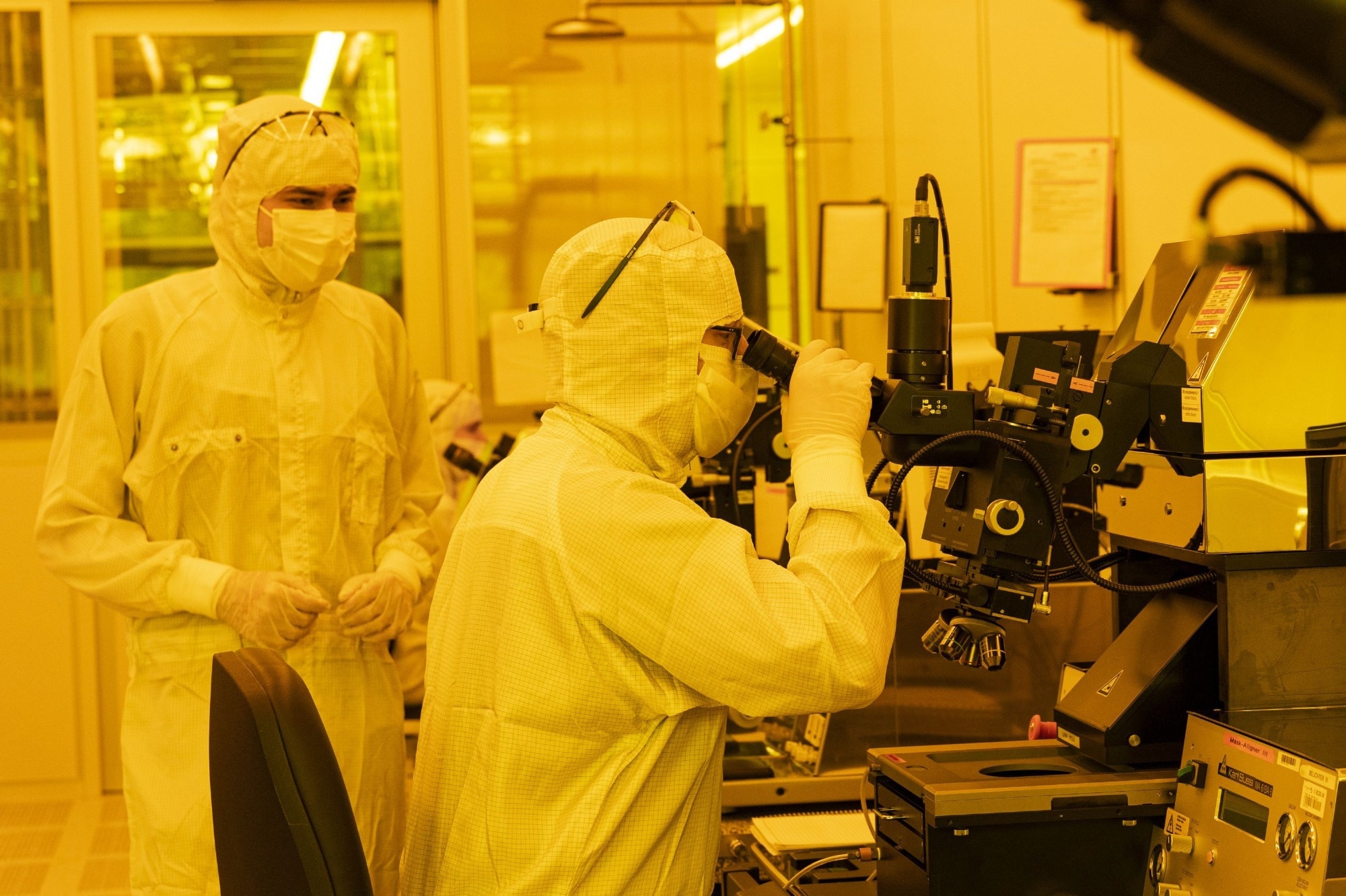At the Forschungszentrum Jülich, a new kind of transistor from germanium–tin alloy has been fabricated by scientists. The alloy comes with numerous benefits over traditional switching elements.
 The germanium-tin processor was fabricated at the Helmholtz Nano Facility, the Helmholtz Association's central technology platform for the manufacturing of nanostructures and circuits. Image Credit: Forschungszentrum Jülich / Sascha Kreklau.
The germanium-tin processor was fabricated at the Helmholtz Nano Facility, the Helmholtz Association's central technology platform for the manufacturing of nanostructures and circuits. Image Credit: Forschungszentrum Jülich / Sascha Kreklau.
Charge carriers have the potential to move quickly in the material compared to silicon or germanium, allowing lower voltages in operation.
The transistor seems to be a hopeful candidate for future low-power, high-performance chips, and perhaps also for the development of the future of quantum computers.
For the past seven decades, the number of transistors on a chip has doubled roughly once every two years—according to Moore’s Law, which is still valid now. The circuits have turned out to be smaller, but an end to this development appears to be in sight.
We have now reached a stage where structures are only 2 to 3 nanometers in size. This is approximately equal to the diameter of 10 atoms, which takes us to the limits of what is feasible. It doesn’t get much smaller than this.
Qing-Tai Zhao, Peter Grünberg Institute (PGI-9), Forschungszentrum Jülich
Scientists have been looking for an alternative to silicon, the primary material utilized in the semiconductor industry.
The idea is to find a material that has more favorable electronic properties and can be used to achieve the same performance with larger structures.
Qing-Tai Zhao, Peter Grünberg Institute (PGI-9), Forschungszentrum Jülich
The study is mainly focused on germanium, utilized in the early days of the computer era. Electrons have the potential to move much faster in germanium compared to silicon, at least in theory.
Qing-Tai Zhao and his partners have currently gone a step ahead. They integrated tin atoms into the germanium crystal lattice to improve the electronic properties. Many years ago, this method was developed at the Peter Grünberg Institute (PGI-9) of Forschungszentrum Jülich.
The germanium–tin system we have been testing makes it possible to overcome the physical limitations of silicon technology.
Qing-Tai Zhao, Peter Grünberg Institute (PGI-9), Forschungszentrum Jülich
As far as the experiments are concerned, the germanium–tin transistor displays electron mobility 2.5 times greater than a similar transistor made of pure germanium.
Another benefit of the new material alloy is that it is consistent with the present CMOS process for chip fabrication. Tin and germanium come from a similar main group in the periodic table as silicon. Hence, the germanium-tin transistors could be combined directly into traditional silicon chips with present production lines.
High Potential for the Computers of the Future
Isolated from classical digital computers, quantum computers could also profit from the germanium–tin transistor. For some time, there have been measures to combine parts of the control electronics straight on the quantum chip, which functioned inside a quantum computer at temperatures close to absolute zero.
Measurements indicate that a transistor made of germanium-tin will function considerably better under such conditions compared to those made of silicon.
Qing-Tai Zhao stated, “The challenge is to find a semiconductor whose switching can still be very fast with low voltages at very low temperatures.”
For silicon, this switching curve flattens out to less than 50 K. The transistors require a high voltage and power, which eventually results in failures of the sensitive quantum bits due to the heating.
Qing-Tai Zhao stated, “Germanium–tin performs better at these temperatures in measurements down to 12 Kelvin, and there are hopes to use the material at even lower temperatures.”
The germanium–tin transistor is an additional step toward optical on-chip data transmission. The transmission of data with light signals is an earlier standard in several data networks since it is significantly quicker and highly energy-efficient than data transfer through electrical conductors.
In micro- and nanoelectronics, data is generally still sent electrically. Collaborators from the Jülich working group of Dr. Dan Buca have developed a germanium-tin laser that sets the stage to transfer data optically directly on a silicon chip.
The germanium-tin transistor and these lasers offer a hopeful solution for the monolithic integration of photonics and nanoelectronics on a single chip.
Journal Reference
Liu, M., et al. (2023) Vertical GeSn nanowire MOSFETs for CMOS beyond silicon. Communications Engineering. https://doi.org/10.1038/s44172-023-00059-2.